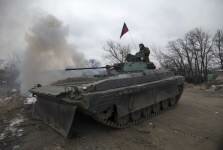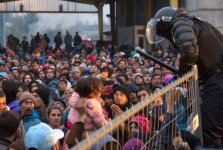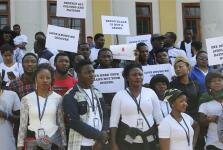
Many earthquake victims are having to wait for relief supplies
The United Nations has urged Nepal to relax customs controls which it says are holding up deliveries of aid to survivors of last week’s earthquake.
UN humanitarian chief Valerie Amos said Nepal had a duty to provide faster customs clearance for relief supplies.
Many people are yet to receive the aid, which is piling up at Kathmandu airport following, a week after the 7.8-magnitude earthquake.
At least 6,840 have died. Authorities have ruled out finding more survivors.
‘Administrative issues’
On Saturday Baroness Amos said she had reminded Prime Minister Sushil Koirala that Nepal had signed an agreement with the UN in 2007 for simpler and faster customs clearance for relief aid in a disaster.
“He has undertaken to ensure that happens, so I hope that from now we will see an improvement in those administrative issues,” she told AFP news agency.
The UN representative in the country, Jamie McGoldrick, said the Nepalese government “should not be using peacetime customs methodology”.
Nepal lifted import taxes on tarpaulins and tents on Friday but home ministry spokesman Laxmi Prasad Dhakal said all goods arriving from abroad had to be inspected.
“This is something we need to do,” he said.
Rameshwor Dangal, of Nepal’s National Disaster Management Division, said many people were waiting to receive emergency supplies or be airlifted to safety.
“In many areas people are not getting relief and it is natural that they are unhappy about it,” he told AFP.
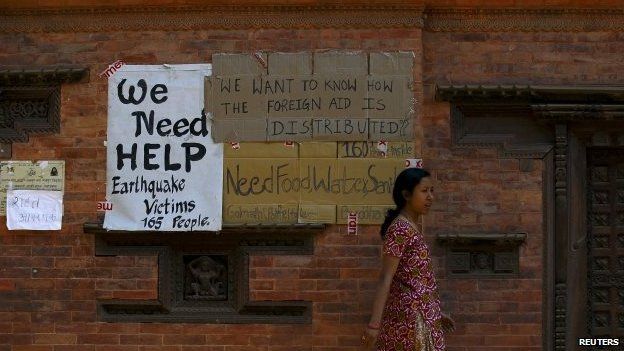
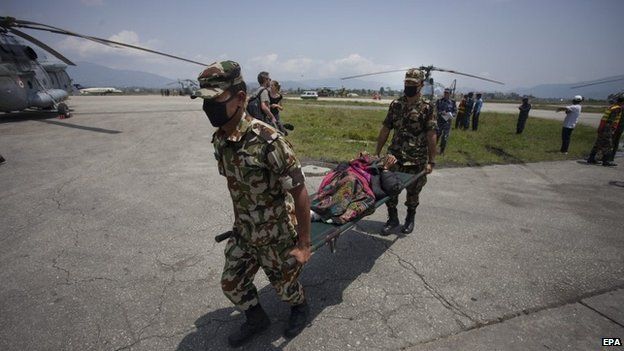
More than 14,021 people were injured in the quake which struck near Kathmandu.
Landslides and poor weather have hampered efforts to deliver aid to isolated districts, and there are only about 20 helicopters available for the rescue and relief operations.
Nepal has criticised both the speed of foreign aid deliveries the type of products countries are sending.
Finance Minister Ram Sharan Mahat said: “We have received things like tuna fish and mayonnaise. What good are those things for us? We need grains, salt and sugar.”
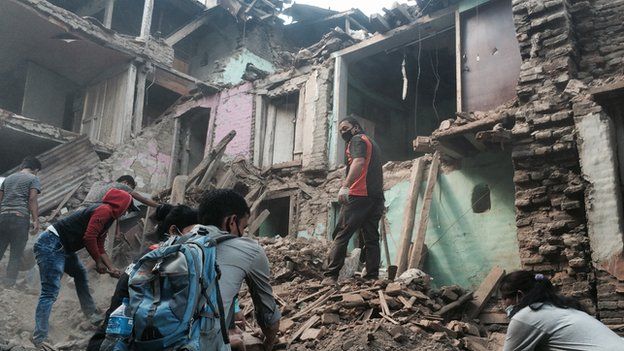
Krishna Devi Sreshta is carefully picking her way through the rubble of what was her home. It’s one of about 25 houses in Sankhu, just an hour’s drive from Kathmandu, that was completely destroyed by the earthquake.
She’s here to see if she can salvage anything. “We were in the field when the earthquake hit,” she says. “That’s why we were saved.”
Not everyone was so lucky. About 50 members of this community died. She points to the clothes that she’s wearing. “This is what I was wearing last Saturday. It’s all I have left.”
Through a narrow doorway I can see the inside of her house, but it’s too dangerous to go in. Everything has been removed from the house. “That was my fridge,” Krishna says, pointing at some twisted remains outside. “And over there my television.”
A group of volunteers arrive with shovels and spades and walk past. They are here to help. No-one else is.
The fate of thousands of people in remote areas remains unknown.
The death toll could go up, as search and rescue efforts continuing in several hill districts including Dhading, Rasuwa and Sindhupalchok, the government has said.
While the vast majority of casualties were in Nepal, about 100 people are reported to have died in neighbouring India, China and Bangladesh.
The EU envoy to Nepal, Rensje Teerink, said on Friday that the whereabouts of 1,000 EU citizens was still unknown.



